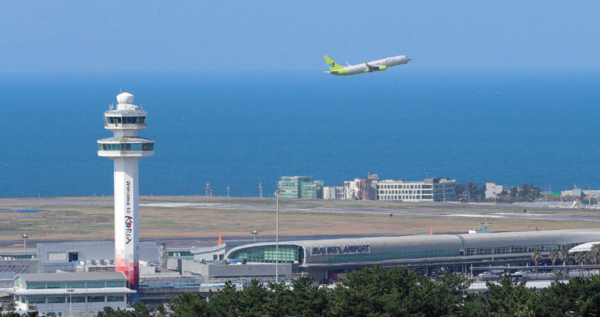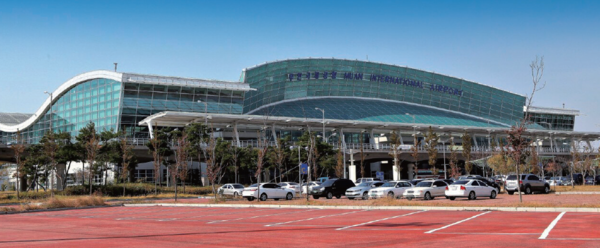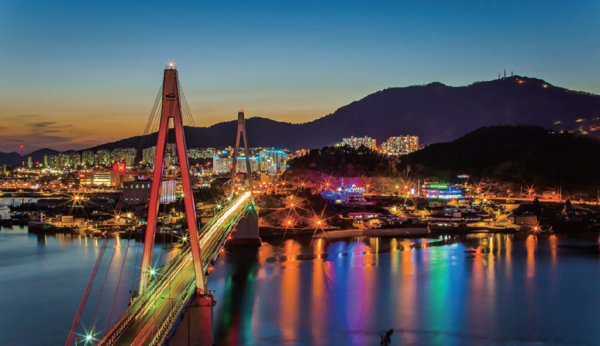Airports connect people through the sky. However, while a lot of positive public opinion regarding South Korea’s airports exists, there is also no shortage of criticism. After the recent World Scout Jamboree incident, intense criticism arose regarding the new Saemangeum Airport, which is being promoted in the region. Considering the issues, the Sungkyun Times (SKT) will investigate the status of airports in the nation and public opinion on additional airport construction.
Where Korean Airports Stand
-The Current State of Domestic Airports
The first airport in Korea was the Yeouido Airfield, located on Yeouido Island, which was then a part of Gyeonggi Province. Gimpo Airport then took its place and served as Korea’s hub for international travel until 2001, when it transferred its international flights to the newly built Incheon Airport. Meanwhile, airports such as Gimhae Airport and Jeju Airport were developed around the same period. Ever since then, the four airports have been functioning as the main gateways in and out of Korea. This is reflected in the yearly passenger statistics from the four airports, with the domestic-oriented Jeju and Gimpo Airports flying a combined 54.2 million passengers between them and the international hubs of Incheon and Gimhae flying an additional 27.8 million. Korea also has 11 more airports in operation, with four each in Jeolla and Gyeongsang Province, two in Gangwon Province, and one in Chungcheong Province. However, with an average of just 400,000 passengers flown in 2022 from the eight least popular airports and the highest being a mere 3.1 million passengers in Cheongju, the current state of airports in Korea has come under the spotlight regarding their actual usefulness.

-More in Construction, or to Be Constructed
Currently, there are seven airports under construction or that are due to be constructed. Gadeokdo Airport and Daegu-Gyeongbuk Airport are each set to replace Gimhae and Daegu Airports, respectively, as they have been deemed to have problems such as proximity to residential areas, aging facilities, and limited space. A second airport is also being constructed on Jeju Island to meet the tourist demand. Out of the remaining four, the Ulleung, Baengnyeong, and Heuksan Airports will be built in remote island regions. Meanwhile, Saemangeum Airport is planned to be connected to Gunsan Airport through a taxiway, which will return Gunsan Airport to its military airport status. Additionally, three plans are pushing for national approval: the Southern Gyeonggi, Pocheon, and Seosan Airports. Advocates for these plans argue that they will give residents more freedom in their choice of transport. However, critics argue that their development is often politically motivated and that they are not in the best interests of the regions. Thus, it is crucial to consider the opinions of both the advocates and the critics.

Opinions Regarding New Airport Construction
-The Advocates
Those advocating for more airports in Korea state they will bring about regional balance and accessibility for nearby residents. As visible from the disparity of economic and cultural resources between the Seoul Metropolitan Area and every other region in Korea, there is a dire need for balanced regional growth. An airport could provide the kickstart a region needs as such a large project can bring in tremendous amounts of capital and labor demand. For example, according to Düsseldorf Airport in Germany, the regional airport has created 56,700 jobs in the region of a city populated with 600,000 people. On the other hand, there is a practical need for regional airports in some rural areas, as the residents of these regions do not have access to fast and convenient transportation. Ulleung, Baengnyeong, and Heuksan Island are all island regions that only have access to the mainland by sea, if not for air travel. When the only other option is to spend several hours on a ferry and then another several hours on the road or a plane, air travel will be able to raise their quality of life (QOL) immensely.

-The Critics
Critics argue that the promised benefits of local airports may just be an illusion. For example, Yangyang Airport, established in 2001 to serve the coastal cities of Gangneung, Yangyang, and Sokcho, was intended to operate as a transport center for the northeastern area of Korea. However, in 2022, it only served 900 passengers daily. Similarly, Wonju Airport, which opened in 1997, was nearly forced to close in 2002 when airlines refused to assign flights due to the low passenger numbers. Lee Soo-rin (Sophomore, Department of Business Administration), a local resident of Wonju City, said, “The biggest problem with the airport is the vast cost of maintenance compared to their minuscule use.” Another concern is that the construction of airports is often politically motivated. This is because pledging to bring new social overhead capital (SOC) is one of the easiest yet most straightforward promises for a politician to make. However, if not considered well, these plans may strain the national government’s resources. For example, Muan Airport in South Jeolla Province saw a loss of \2 billion in 2022 due to low passenger numbers.

Meeting in the Middle
-A Strengthened Approval Process
One way to avoid the problem of political exploitation is through democracy, where the people should scrutinize every candidate’s policy rigorously to seek out any unrealistic plans for SOC. As voters stop electing candidates who make easy promises, politicians will begin reconsidering their pledges to set plans that will positively impact the QOL in the region. Another way to solve this issue is by strengthening the preliminary feasibility study (PFS) during the approval phase. During construction, many regional airports, such as the Saemangeum Airport, had their PFS requirements lifted either because they had a proposed cost of less than \50 billion or because they were in underdeveloped regions. However, simply allowing cheaper and remote plans to bypass PFS is not the solution to regional imbalance. Thus, the national and local governments should consider the plans thoroughly, examining every point that may arise as a concern. Another possible idea may be to set a limit on how many airports a single province can have. However, the construction of new airports should be allowed in those regions that genuinely need them based on the governmental ability to make those exceptions. For instance, new airport construction should be allowed in areas where the local landscape is too rough for highways and train lines.
-Respecting Balanced Growth
On the other hand, it is also essential to note that airports bring growth and development to disadvantaged regions when built with enough consideration and planning. For example, Yeosu Airport, which saw around 1 million passengers in 2022, has made the far-flung tourist city of Yeosu more accessible to those living in Seoul. Since Yeosu Airport is right next to the Yeosu National Industrial Complex, Jeolla Province’s industrial core, it serves as a prime example of a well-planned airport. Thus, further airport planning should take a page out of Yeosu’s books and attempt to incorporate local industry, tourism, and the demand from residents. Kim Sang-tae, a professor at the Department of Global Leader at Sungkyunkwan University, said, “Simply having an airport in the area could serve as a regional symbol that can attract businesses and workers through the improved accessibility.” Prof. Kim also pointed out that while airports are funded on the national level, the influx of capital could be funneled to support local construction businesses, leaving a lasting impact on the local economy. Thus, building local airports could be a step toward alleviating the regional imbalance in Korea.

While air travel is fast and convenient, building airports is neither cheap nor easy. Many important factors — such as regional balance and reasonable selection — come into play and can have bigger consequences than expected. Now is the critical point for local airports. Should Korea build more airports in the less developed regions or put an end to this airport-building mania?
